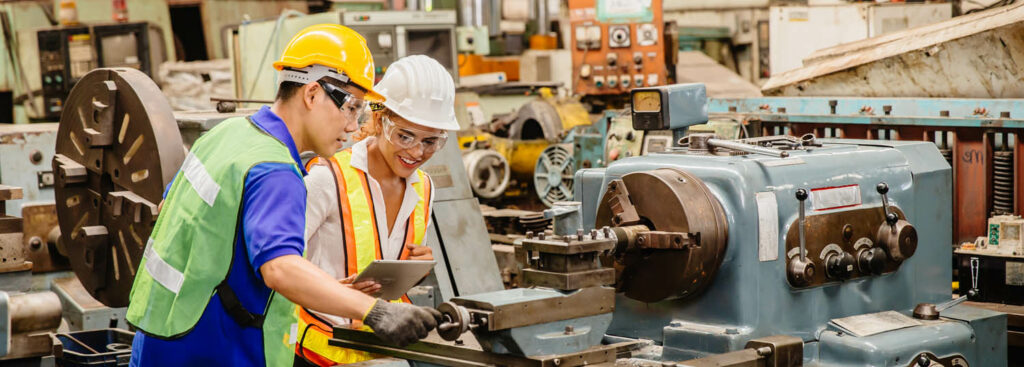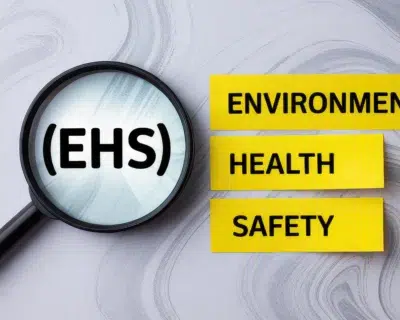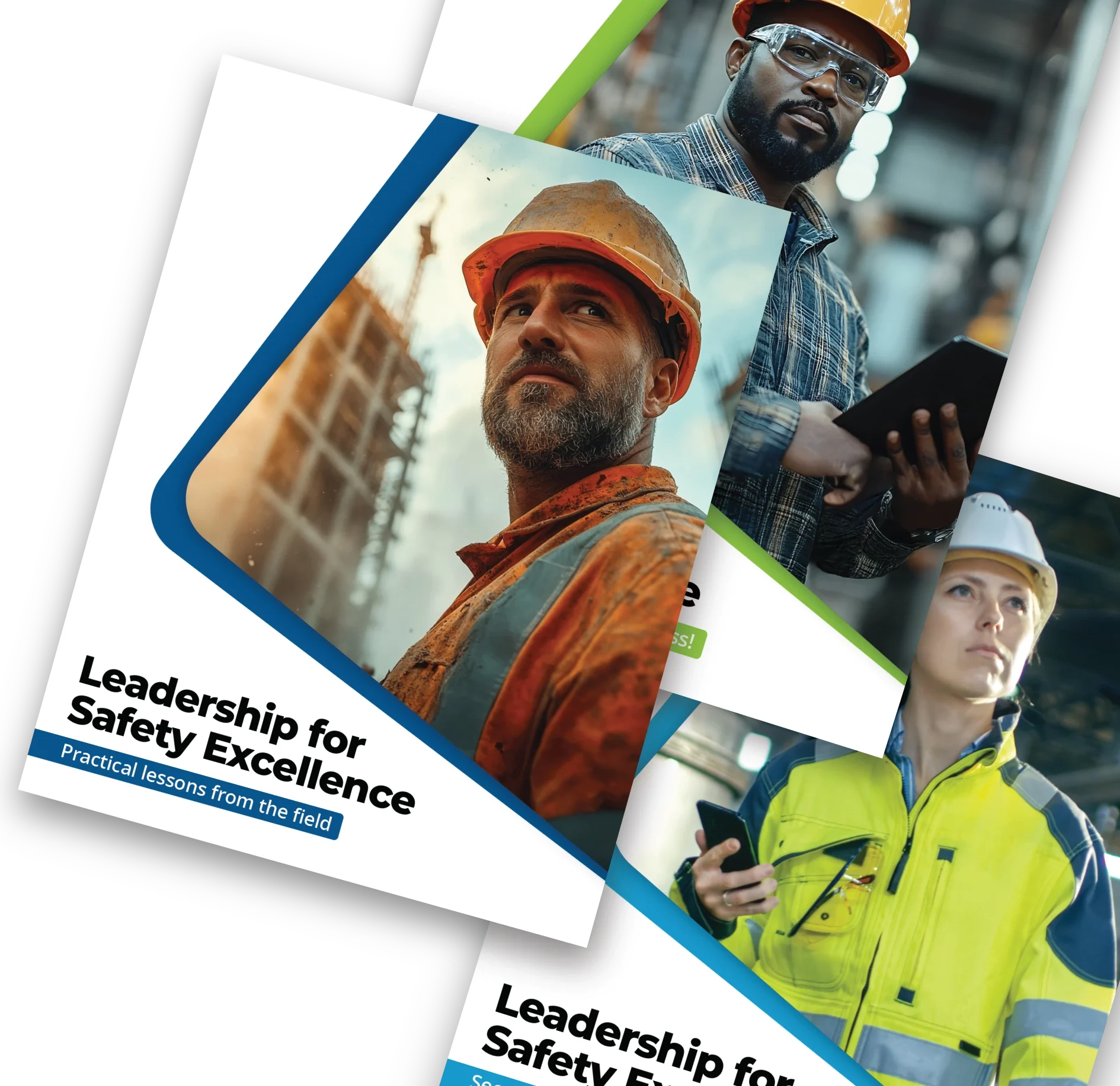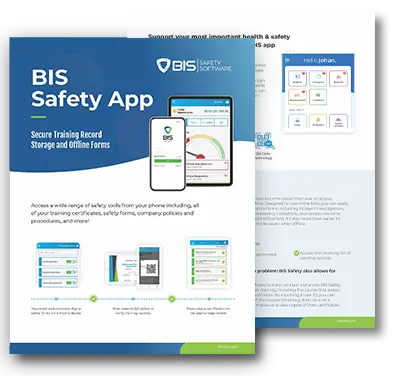
Top 10 Workplace Safety Topics for Meetings
Workplace safety topics should be discussed in a manner that doesn’t patronize the many employees who already respect their equipment and use the required PPE. We have to remember that these are often the majority. Instead, they should be brought up as more of a discussion than a lecture. One effective way to do this is by addressing workplace safety topics during meetings and promoting conversation. However, to do this effectively it’s good to have a clear topic in order to keep each meeting efficient and simple. With that in mind here are the top 10 workplace safety topics to discuss, along with real-life examples of potential risks:
1. Hazard Communication
Hazard Communication is paramount for ensuring that employees understand the risks associated with their work and know how to protect themselves. Effective hazard communication helps prevent accidents, illnesses, and injuries caused by hazardous chemicals or materials.
The Occupational Safety and Health Administration (OSHA) has specific requirements for hazard communication that employers must follow, including:
- Hazard Determination: Employers must identify and evaluate the hazards associated with chemicals and materials used in the workplace.
- Safety Data Sheets (SDS): Employers must obtain SDSs from manufacturers or distributors for all hazardous chemicals and materials used in the workplace. These sheets contain information on the physical and chemical properties of the material, health effects, and safety precautions.
- Labeling: Employers must ensure that all hazardous chemicals and materials are properly labeled with information about the hazard and appropriate precautions.
- Employee Information and Training: Employers must provide information and training to employees on the hazards associated with the chemicals and materials used in the workplace and appropriate safety measures.
Real-Life Examples:
- Exposure to Toxic Chemicals: Without proper communication and training, employees may not be aware of the risks associated with handling hazardous chemicals, leading to exposure and potential health problems.
- Chemical Reactions: Improper mixing or storage of incompatible chemicals can create dangerous conditions, such as explosions, fires, or toxic gases.
- Ignoring Warning Signs: Employees untrained in recognizing warning signs may fail to take appropriate action, leading to accidents and injuries.
- Improper Storage and Handling: Lack of proper communication and training can result in improper storage and handling of hazardous materials, causing spills, leaks, and other accidents.
2. Fire Safety
Fire safety is essential and should never be overlooked. Employers must have a comprehensive fire safety plan to minimize fire risks and ensure everyone in the workplace knows what to do in the event of a fire emergency.
Real-Life Examples:
- Lack of Fire Prevention Measures: Without proper fire prevention measures, such as regular maintenance of electrical equipment and proper storage of flammable materials, the risk of a fire increases.
- Poorly Maintained Fire Suppression Systems: Fire suppression systems must be properly maintained and tested to ensure they function correctly during a fire.
- Inadequate Emergency Exits: Blocked or poorly marked emergency exits can impede evacuation, leading to injuries or fatalities.
- Lack of Fire Drills and Training: Without regular fire drills and training on fire safety procedures, employees may not know what to do during a fire emergency, leading to confusion and potentially dangerous situations.

3. Ergonomics
Ergonomics involves designing workplaces to optimize human performance and reduce the risk of workplace injuries and musculoskeletal disorders. Proper ergonomics can help reduce the risk of injuries and improve productivity.
Real-Life Examples:
- Repetitive Strain Injuries: Repetitive motions, such as typing or using a mouse, can cause repetitive strain injuries like carpal tunnel syndrome.
- Back and Neck Pain: Poor posture and incorrect lifting techniques can lead to back and neck pain.
- Eye Strain: Poor lighting or glare on computer screens can cause eye strain and headaches.
- Fatigue and Discomfort: Uncomfortable or poorly designed workspaces can lead to fatigue and discomfort, reducing productivity and increasing the risk of workplace injuries.
4. Electrical Safety
Electrical hazards can result in serious injuries or even death. It’s crucial to have a comprehensive electrical safety plan to minimize the risk of electrical hazards and ensure everyone knows what to do during an electrical emergency.
Real-Life Examples:
- Overloaded Electrical Circuits: Overloading electrical circuits can lead to overheating and electrical fires.
- Faulty Electrical Equipment: Faulty electrical equipment can cause electrical shocks, electrocution, or fires.
- Inadequate Grounding: Inadequate grounding can lead to electrical shocks or electrocution.
- Lack of Proper Personal Protective Equipment (PPE): Workers dealing with electrical equipment may need PPE, such as insulated gloves, to prevent electrical shocks.
5. Personal Protective Equipment (PPE)
PPE is designed to protect workers from potential workplace hazards that cannot be eliminated through engineering and administrative controls. It includes safety helmets, gloves, safety glasses, respirators, and full-body suits.
Real-Life Examples:
- Eye Injuries: Exposure to flying particles, chemicals, or intense light can cause serious eye injuries, including blindness.
- Hearing Loss: Exposure to loud noise can cause permanent hearing loss if not properly protected by earplugs or earmuffs.
- Respiratory Problems: Exposure to dust, chemicals, or other harmful substances can cause respiratory problems, including lung cancer and other diseases.
- Head Injuries: Falls, impact from falling objects, and other hazards can cause head injuries, including traumatic brain injuries.
6. Slips, Trips, and Falls
Slips, trips, and falls are common causes of workplace injuries and can occur in almost any workplace. These accidents can result in serious injuries such as broken bones, head injuries, back injuries, and even fatalities.
Real-Life Examples:
- Slippery Floors: Spills, wet floors, and other hazards can cause slips and falls, especially in areas where liquids are used.
- Tripping Hazards: Loose carpeting, cords, and cluttered walkways can cause trips and falls.
- Uneven Surfaces: Uneven or poorly maintained surfaces can cause trips and falls.
- Poor Lighting: Poor lighting can make it difficult for workers to see potential hazards, increasing the risk of slips, trips, and falls.
- Inadequate Footwear: Wearing inappropriate footwear can increase the risk of slips, trips, and falls.

7. Machine Guarding
Improperly guarded machinery can cause serious injuries, including amputations, fractures, and lacerations. According to OSHA, machine guarding violations are among the top 10 most frequently cited OSHA violations.
Real-Life Examples:
- Moving Parts: Machines with moving parts, such as saws, presses, and conveyors, can cause serious injuries if workers come into contact with them.
- Pinch Points: Pinch points are areas where body parts can get caught or crushed.
- Flying Debris: Machines like grinders and sanders produce flying debris that can cause eye injuries or lacerations.
8. Workplace Violence
Workplace violence can occur in any workplace and can take many forms, including physical assault, threats, intimidation, and harassment. According to the National Safety Council, workplace violence is the second leading cause of occupational fatalities in the United States.
Real-Life Examples:
- Physical Assault: Acts of violence, including hitting, punching, or kicking, and the use of weapons.
- Threats: Verbal threats, written threats, or threats made through electronic communication can cause fear and anxiety among employees.
- Harassment: Sexual harassment, bullying, and discrimination can create a hostile work environment and cause emotional distress.
9. Driving Safety
Driving is an essential part of many jobs, but it can also be dangerous. Motor vehicle accidents are a leading cause of work-related fatalities.
Real-Life Examples:
- Distracted Driving: Leading cause of accidents, including texting, talking on the phone, eating, or adjusting the radio.
- Speeding: Common cause of accidents, especially in work zones or heavy traffic.
- Fatigue: Impairs reaction time and decision-making ability, especially for employees who drive long distances or work irregular hours.

10. Emergency Preparedness
Emergencies can happen at any time, whether it’s a natural disaster, a workplace accident, or a medical emergency. It’s critical for employers to have a plan in place to protect employees and respond to emergencies quickly and effectively.
Real-Life Examples:
- Lack of Planning: Without a plan, employees may not know what to do during an emergency, leading to confusion and delays.
- Inadequate Training: If employees are not trained on emergency procedures, they may not know how to respond effectively.
- Insufficient Communication: Failed or absent communication systems can prevent employees from receiving important information or instructions.
By regularly addressing these workplace safety topics in meetings, employers can help create a safer work environment, reduce the risk of injuries, and ensure that employees are prepared to handle potential hazards.




































